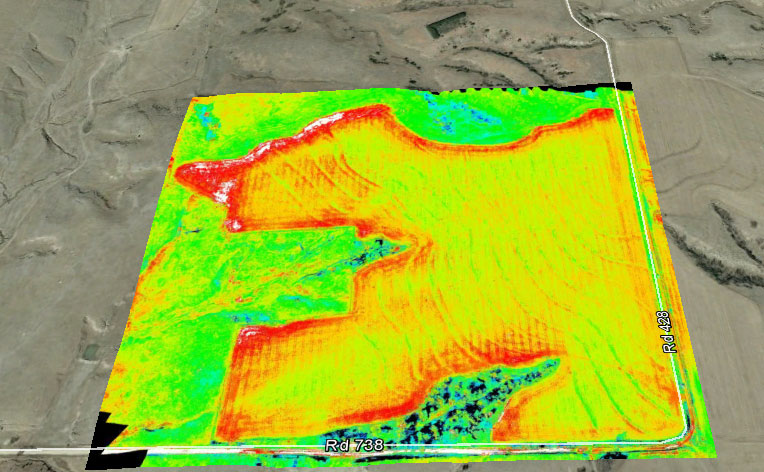Air Tractor buys drone startup
Quadcopters made for farming
Until the recent acquisition of Hangar 78 UAV (and the hiring of Wes Hall, managing partner of that drone startup), Air Tractor had exclusively made manned aircraft. The company has produced agricultural aircraft for decades, with the current line including various single-engine turboprops fitted with tanks that have a capacity up to 800 gallons, and sprayers used for agriculture and firefighting, eradication of illegal drugs in the field, and oil spill cleanup at sea. The company announced the acquisition of the drone startup on May 25, bringing much smaller aircraft into the fold: specifically quadcopters (including the Hangar 78 UAV flagship Yield Defender) made for aerial survey and mapping missions, and principally developed for crop surveillance. Infrared cameras and light detection and ranging (LiDAR) sensors fitted on drones capture a rich trove of data including soil moisture, crop condition, and topography that helps farmers adjust irrigation, fertilization, and pesticide application for maximum efficiency.
Based in Olney, Texas, Air Tractor opted to buy a locally grown drone company. Hall, who built his startup near Dallas, previously worked at Boeing and Lockheed Martin, according to his online biography, and worked on systems including Air Force One and the F-16 and F-35 fighters. He earned his airframe and powerplant mechanic’s certificate prior to undergraduate studies at Southern Illinois University. Hall will continue to develop the Yield Defender in his new role as vice president of UAS technologies at Air Tractor.
“We are very passionate about the vision and extremely proud to join the Air Tractor family,” Hall said in the news release. “This acquisition allows us to widen our engineering expertise, reach global markets, offer cutting edge technology, and expand our customer support solutions.”
Air Tractor enters the drone market as the once-hot agricultural aircraft market has cooled a bit, though it has always been cyclical, Hirsch noted in a telephone interview, and that had nothing to do with the company decision to jump into the drone market. (Both Air Tractor and Thrush logged double-digit declines in aircraft shipments and revenue for 2015, according to data from the General Aviation Manufacturers Association.) Drone sales are projected to grow significantly in the years to come, though actual sales have lagged behind some of the most optimistic early projections. Industry insiders attribute this in part to the long-delayed effort to update FAA regulations to facilitate more widespread commercial drone use. Those regulations, specifically FAR Part 107, are expected very soon.
Agricultural work may be the first type of drone mission that really takes off, drones being well suited for the tasks of monitoring crops in detail, with precision, and on a large scale.

Hall, in the telephone conversation, noted that Yield Defender is designed to operate autonomously (though a pilot and visual observer are always involved, as the FAA requires), which allows it to fly very precise grids, collecting images that can be stitched together to form a larger picture covering a farm of virtually any size.
Hirsch said Air Tractor’s primary customers—independent aerial application operators—have expressed interest in unmanned systems, and in some cases already added drones to their fleet.
“In the past couple of growing seasons,” Hirsch said, “there has been interest from that group.”
Marketing the Yield Defender and other drones to operators who are already well-trained and well-versed in manned aviation, particularly agriculture, makes a lot of sense, Hirsch said.
“Putting aviation decisions in aviation-savvy people’s hands is a good thing,” Hirsch said.
It is also likely that those who operate one or more manned aircraft will have the resources to add a $12,000 drone (the list price for Yield Defender) to their fleet, more so than a small farmer would.
Hirsch said the company will work to continue developing drone technology, including tools for situational awareness and detect-and-avoid capabilities that will help drones and manned aircraft safely avoid each other. It is not lost on Hirsch that this same technology will eventually eliminate the need for a pilot in the turboprops that remain Air Tractor’s bread and butter.
“Everybody sees that on the horizon,” Hirsch said of the potential for unmanned crop sprayers, though he expects it will be many years before the technology is mature enough, and regulations allow operations like that.




